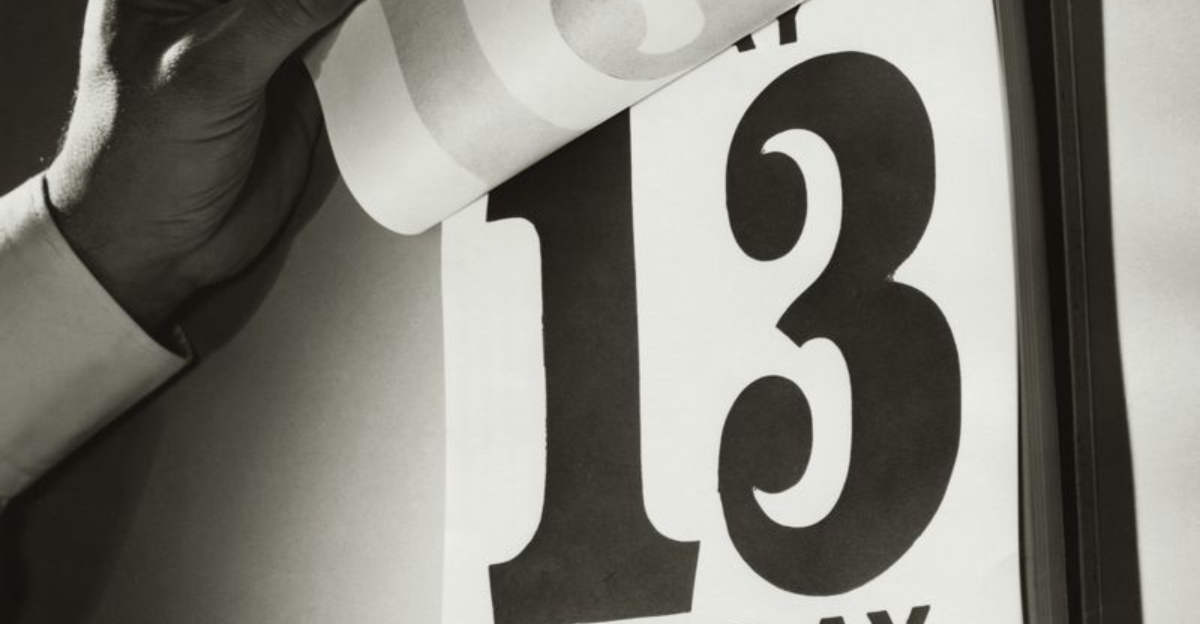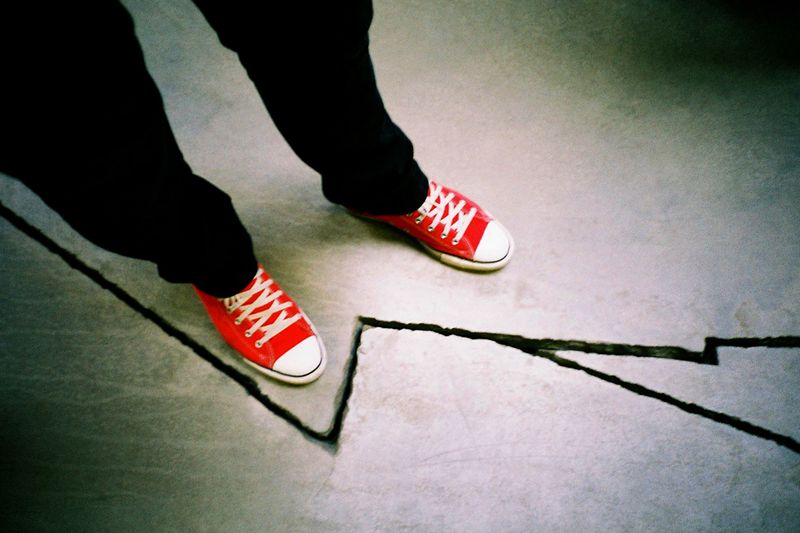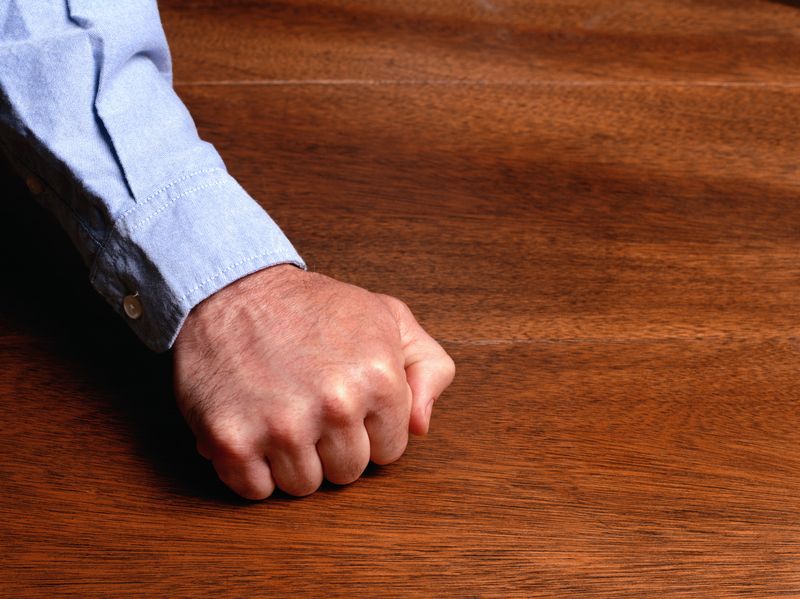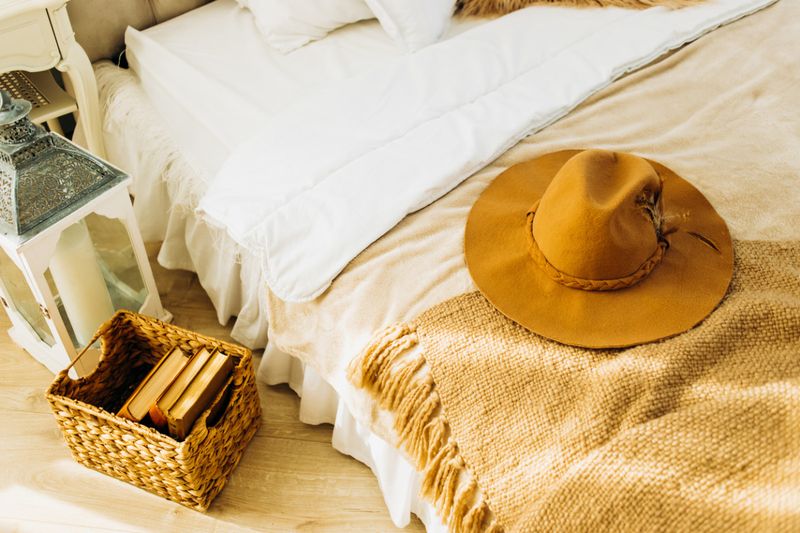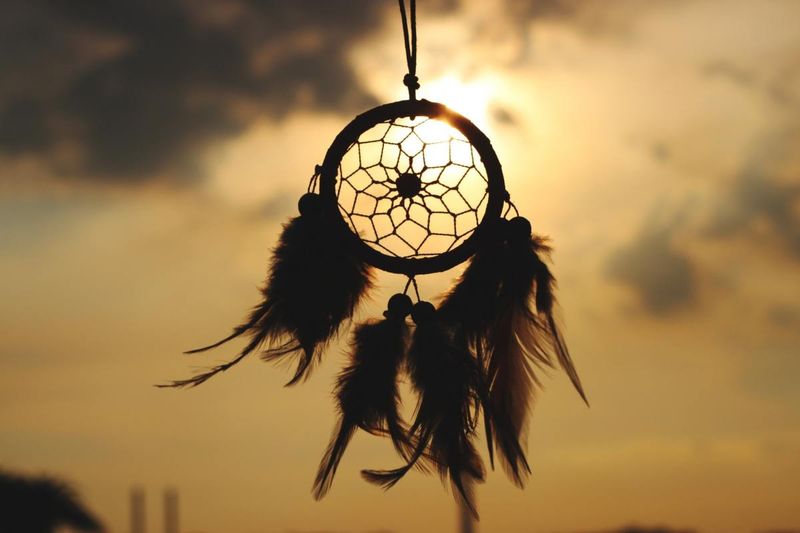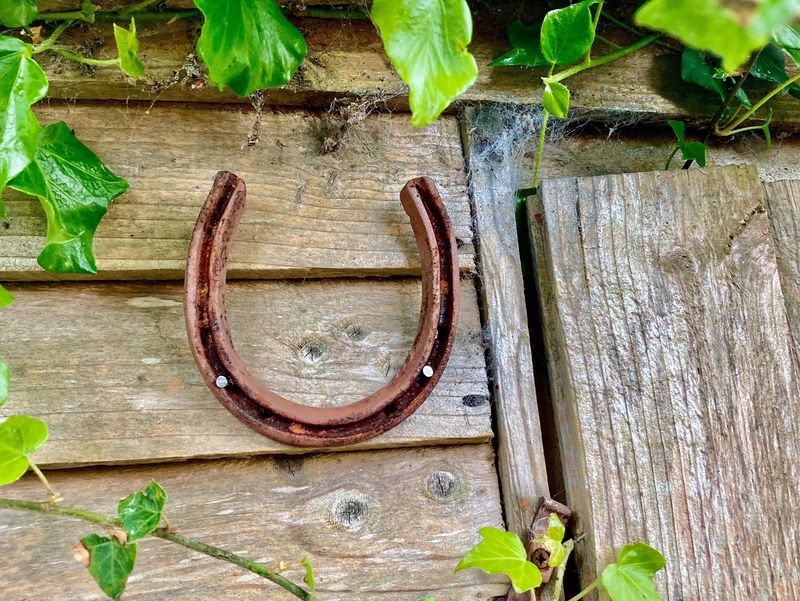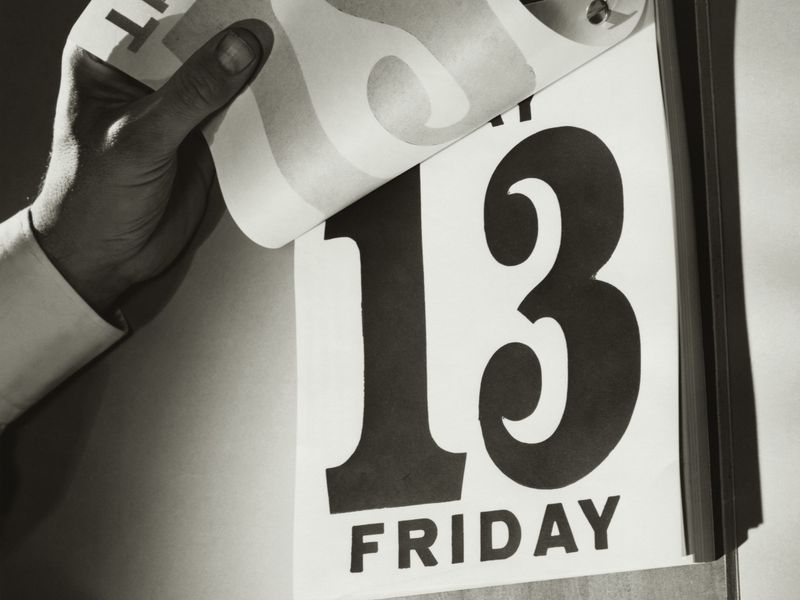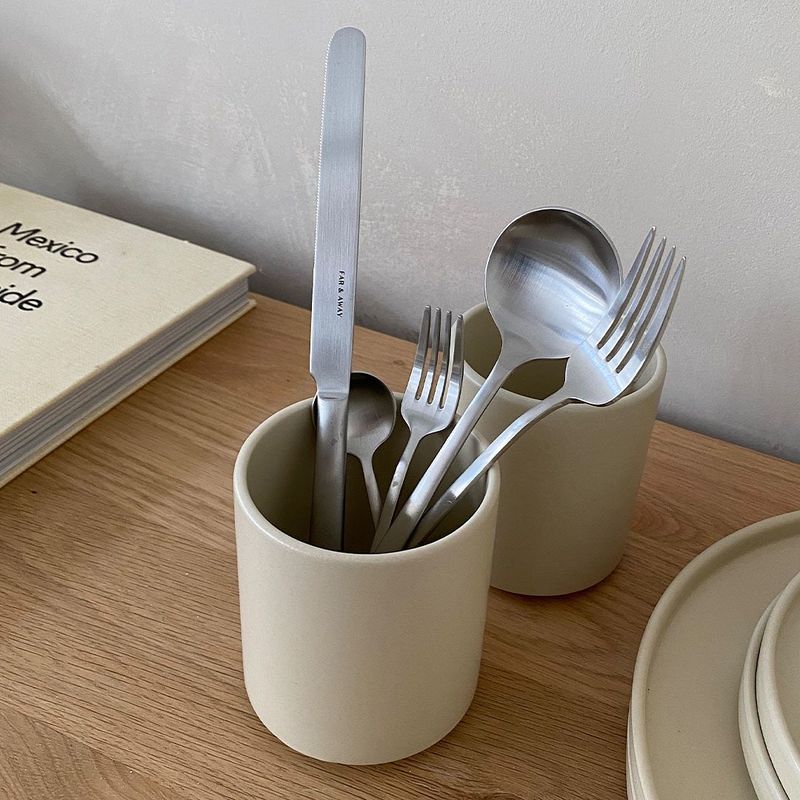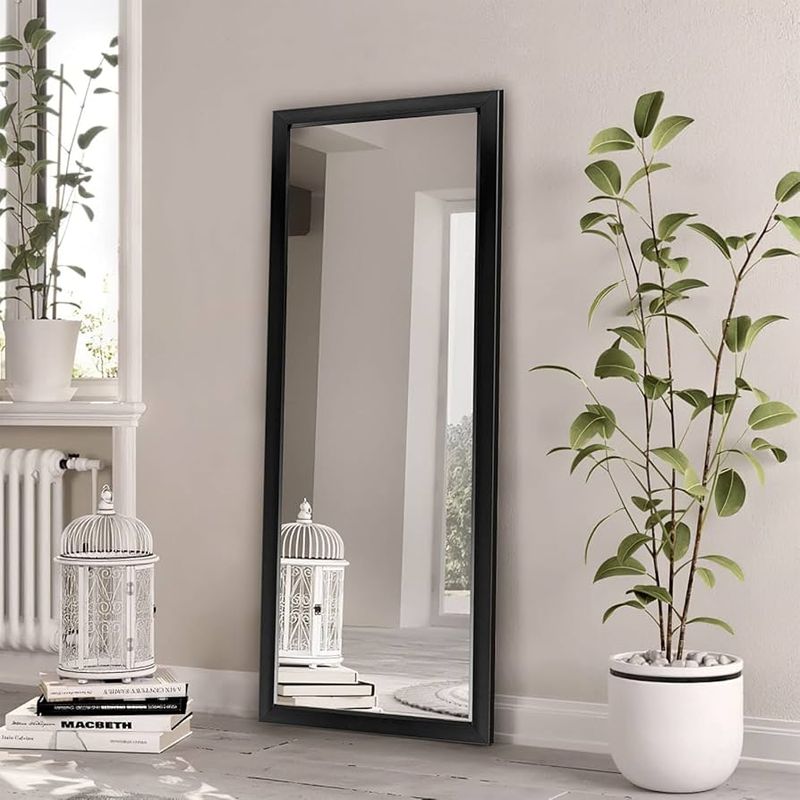Step into a world where everyday actions were deeply intertwined with beliefs and traditions. In the past, American life was full of superstitions that guided behavior, influenced decisions, and sparked imaginations.
From household practices to personal habits, these superstitions were a part of daily conversation and common knowledge.
Though many of these old beliefs have faded into obscurity, they offer a fascinating glimpse into the fears, hopes, and cultural norms of yesteryears.
Let’s explore 15 forgotten superstitions that once resonated across the country, revealing a tapestry of traditions that shaped American folklore.
1. Don’t Step on a Crack
The childhood chant “Step on a crack, break your mother’s back” was more than mere playground fun. It taught kids to navigate sidewalks with caution, instilling a sense of awareness. This superstition was both a game and a subtle lesson in mindfulness.
Children would take great care to avoid cracks, often turning walks into playful challenges. The belief that stepping on a crack could harm one’s mother added an intriguing mixture of fear and excitement.
This superstition, though largely forgotten, once held a special place in the hearts of children across America.
2. Knock on Wood
Knocking on wood was a deeply ingrained habit, meant to ward off bad luck. After expressing a hope or fear, people would knock on nearby wood to keep negative spirits at bay. This gesture, believed to prevent jinxes, was part of daily interactions.
Conversations were often punctuated by this ritual, reflecting the belief in unseen forces at work. By physically connecting with wood, people felt they could influence their fate, turning anxiety into action.
Although less common today, this superstition reminds us of a time when everyday life was closely linked with the spiritual realm.
3. Don’t Open an Umbrella Indoors
Opening an umbrella indoors was thought to invite misfortune by angering protective spirits or disturbing a home’s harmony. This belief made umbrellas strictly outdoor tools, with indoor openings avoided at all costs.
Families adhered to this superstition, fearing the wrath of upset spirits. It was a way to respect the home’s balance, ensuring peace within its walls.
In a culture where every action had potential spiritual consequences, this simple rule was a common precaution. Though no longer a widespread concern, it reflects a time when homes were seen as sacred spaces, guarded by unseen forces.
4. Don’t Put Your Hat on the Bed
The superstition around hats on beds warned of bad luck and negative energy. Hats were to be placed elsewhere, respecting the sanctity of beds. This belief intertwined with notions of respect and order within the home.
Placing a hat on the bed was said to invite chaos or misfortune, a risk few were willing to take. This superstition reinforced careful, intentional living, ensuring harmony in day-to-day actions.
While it may seem quaint now, it once conveyed a broader cultural emphasis on maintaining positive spaces and energies. The practice reflected a time when every action held deeper significance.
5. Spilling Salt Invites Bad Luck
Salt, a prized and essential commodity, was never to be wasted. Spilling it was considered a bad omen, with the remedy being a pinch thrown over the left shoulder.
This gesture sought to blind lurking evil spirits, turning potential misfortune into a defensive act. The superstition emphasized salt’s value and spiritual significance. It taught caution and respect for resources, wrapped in a ritual of protection.
Though this belief has faded, it highlights a time when resourcefulness and spirituality were closely linked, reflecting a world where everyday mishaps held cosmic implications.
6. Whistling Indoors Attracts Evil
Whistling indoors was once a cautionary tale, thought to summon bad spirits or invite calamity. This belief kept tunes strictly outside, where perceived risks were lower.
Whistles inside the home were avoided, lest they bring unwanted attention from malevolent forces. This superstition reflected a culture attuned to the unseen, where sound could beckon danger.
It taught restraint and awareness, a reminder of the fragile balance between the home and spiritual worlds. Though largely forgotten today, it reveals a time when everyday actions were carefully weighed against potential supernatural consequences.
7. Birds as Harbingers of Death
Birds entering homes uninvited were seen as omens of death or tragedy. This superstition cast birds as spiritual messengers, bearing warnings of impending doom. Families would brace for difficult times, interpreting these visits with somber respect.
The belief linked natural occurrences with fate, emphasizing a deep connection to the animal world. It served as a reminder of life’s unpredictability and the thin veil between the living and spiritual realms.
Though nature is now seen through a different lens, this superstition underscores a past where signs and symbols guided emotional preparedness.
8. Don’t Sweep After Dark
Sweeping indoors after sunset was discouraged, believed to sweep away good fortune. Nighttime was reserved for preserving positive energies, not dispersing them.
This superstition respected the nightly shift in spiritual dynamics, where actions could invite unintended consequences. It taught adherence to natural rhythms, blending practicality with spiritual awareness.
Homes adhered to this rule, ensuring that brooms rested peacefully during the night. Though modern cleaning habits have changed, this belief reflects a time when activities were aligned with cosmic cycles, fostering a harmonious existence with the universe’s daily ebb and flow.
9. Ominous Dreams
Vivid or disturbing dreams were once seen as prophetic, treated with reverence and caution. Especially those involving death were taken as warnings, prompting extra care in daily life.
The superstition elevated dreams to a spiritual pedestal, where they were seen as messages from beyond. People kept dream journals, analyzing details for guidance and foresight.
This practice reflected a belief in the mystical, where dreams bridged the conscious and subconscious. Though science now offers different insights, this superstition highlights a time when dreams were a trusted source of wisdom, shaping decisions and perceptions.
10. Rain on a Wedding Day Brings Blessings
Rain on a wedding day was seen as a blessing, symbolizing fertility and happiness. Rather than a curse, it was interpreted as a natural gift, enhancing the day’s significance. This belief added a hopeful perspective, turning potential disappointment into joy.
Couples embraced the rain, viewing it as a positive omen for their union. The superstition highlighted nature’s role in life’s milestones, encouraging acceptance and gratitude.
While modern weddings often seek sunshine, this belief offers a refreshing reminder to find beauty and meaning in unexpected circumstances, celebrating life’s unpredictable yet rewarding moments.
11. Itchy Palms
An itch in the right palm was believed to herald incoming money, while the left warned of loss. This superstition turned bodily sensations into financial forecasts, adding excitement to ordinary moments.
People would eagerly interpret these itches, hoping for a prosperous turn. This belief connected the body to fate, creating a playful yet earnest relationship with the future.
Though less prevalent today, it reflects a time when everyday feelings were imbued with meaning and potential. The superstition encouraged optimism and caution, inviting individuals to stay attuned to life’s subtle signals and possibilities.
12. Horseshoe Luck
Finding a horseshoe was considered a powerful sign of luck, especially when its open end pointed upward. This superstition elevated the horseshoe to a symbol of protection and fortune.
People hung them over doorways, believing they would catch and hold good luck. The belief linked tangible objects with spiritual protection, offering comfort in uncertain times. It encouraged vigilance, turning ordinary walks into treasure hunts.
While the practice has waned, it underscores a time when luck was actively sought and curated, reflecting a world where symbols and beliefs shaped daily experiences and aspirations.
13. Avoiding the Number 13
The number 13 was shunned, considered unlucky and avoided in addresses and floor numbers. This superstition, deeply rooted in fear, influenced architecture and daily choices.
People went to great lengths to sidestep the number, believing it brought misfortune. The superstition reinforced a cultural wariness of numbers, embedding caution into building designs and personal decisions.
Though many now dismiss it as mere tradition, it highlights a time when numbers carried weight beyond mathematics, shaping perceptions and structures. The practice reflects a society deeply engaged with symbolism, navigating life’s complexities with caution and care.
14. Dropped Utensils and Visitors
Dropping utensils was an amusing superstition predicting visitors based on the fallen item. A fork signaled a woman’s arrival, while a knife indicated a man’s visit.
This belief added lighthearted anticipation to daily routines, turning kitchen mishaps into social forecasts. It invited curiosity and connection, sparking conversations and expectations.
This superstition fostered a sense of community, blending humor with tradition. Though it no longer holds sway, it highlights a time when even accidents were viewed as opportunities for engagement.
The practice encouraged hospitality and openness, reflecting a society rich in interpersonal bonds and playful insights.
15. The Mirror Threshold
Placing a mirror opposite the front door was believed to invite negative energies or spirits. This superstition dictated mirror placement, aligning home design with spiritual protection.
People avoided this setup, fearing it would disrupt harmony and invite unwanted influences. The belief linked physical arrangements with metaphysical risks, emphasizing a mindful approach to home decor.
Though modern tastes often prioritize aesthetics, this superstition reveals a time when interior design was interwoven with spiritual beliefs. It underscores a past where every detail was considered for its impact on well-being, blending practicality with mystical awareness.
